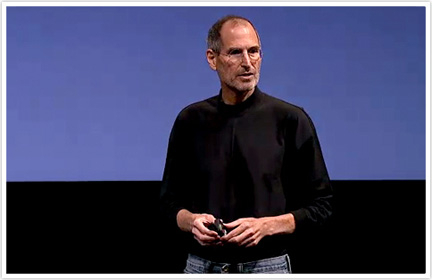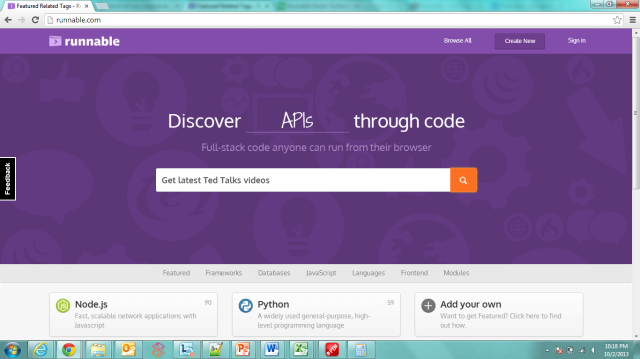Over the past few months, i have been trying to answer a question for myself but haven’t been able to until recently I stumbled upon an excellent blog. The question was – What is that I am passionate about? The question haunted me so much that I gave up my job and a quite a bit of employee stock options but did I find out what is that I am passionate about and did i start following my passion. Not really.
Research on workplace satisfaction tells that people like their jobs for more nuanced reason than simply it matches some innate interest. And for people like me who do not really like their jobs, the “What is my passion” question would have popped-up frequently. When you discuss this with well-wishers then you get some serious advice, “Please follow your passion“. This is a very appealing advice for two reasons – a. It tells you to break away from a routine and do something daring and b. It is a very powerful but simple advice.
So, if we are to break down the “Follow your passion” advice then you discover the passion in advance then go match it to a job. What if people don’t have preexisting passions? How do you discover something that doesn’t exist? After putting my mind through months of acid test, it finally dawned upon me maybe I don’t have a preexisting passion. I like a lot of things. For example – I like to drive around, watch movies, watch T.V. but these are things that I like but not passionate about. So, how do you differentiate between fondness and passion? How does passion feel like? The sensation of excitement about a particular idea is often a different sensation than the type of deep passion that drives people into a fulfilling career.
 Did all successful people have a preexisting passion? If you were to read Steve Job’s biography, you will realize that when he stumbled upon Apple Computers he just saw it as a means to make $1000 and this was around the time when he was deeply passionate about eastern mysticism. Indian Cricketer, Yuvraj Singh was a national level skating champion until his teens when his dad forced him to take up Cricket as a career and at 19 he helped the Indian national team win the Cricket Under-19 World Cup. We can look around for dozen other examples but I think you get the point. These hugely successful people did not follow their passion then how did they become so successful.
Did all successful people have a preexisting passion? If you were to read Steve Job’s biography, you will realize that when he stumbled upon Apple Computers he just saw it as a means to make $1000 and this was around the time when he was deeply passionate about eastern mysticism. Indian Cricketer, Yuvraj Singh was a national level skating champion until his teens when his dad forced him to take up Cricket as a career and at 19 he helped the Indian national team win the Cricket Under-19 World Cup. We can look around for dozen other examples but I think you get the point. These hugely successful people did not follow their passion then how did they become so successful.
Don’t follow. Cultivate your passion. Steve jobs was open to opportunity. When he sensed that his scheme was bigger than he imagined, he pivoted and poured a lot of energy into building a company around selling computers. He cultivated passion. He didn’t follow it. Passion comes with experience. In a recent survey of Office Assistants, more than a third of them considered it their calling or an integral part of their life and identity. Incidentally these were the people who were in that job for more than 25 years. Passion is something that is to be cultivated. Instead of thinking, I will do what I love, try thinking, I will learn to love what I do.
 Be Craftsman’s like. True passion arises after you’ve put in the long hours to really become a craftsman in your field and can then leverage this value to really have an impact, to gain autonomy and respect, to control your occupational destiny. People with the passion mindset ask “What do I really want?” which breeds an obsession whether the job is right for them or not. By contrast, the craftsman’s mindset acknowledges that no matter what field you’re in, success is always about quality. Once you’re focused on the quality of the work you’re doing now rather than whether or not it’s right for you, you won’t hesitate to do what is necessary to improve it.
Be Craftsman’s like. True passion arises after you’ve put in the long hours to really become a craftsman in your field and can then leverage this value to really have an impact, to gain autonomy and respect, to control your occupational destiny. People with the passion mindset ask “What do I really want?” which breeds an obsession whether the job is right for them or not. By contrast, the craftsman’s mindset acknowledges that no matter what field you’re in, success is always about quality. Once you’re focused on the quality of the work you’re doing now rather than whether or not it’s right for you, you won’t hesitate to do what is necessary to improve it.
No Comfort Zone. You don’t really know who you are until you get out of your comfort zone. Although deliberate practice is often strenuous and uncomfortable, it’s the only path to true mastery. The craftsman mindset drives you to acquire and refine special skills. People with rare skills are more likely to get great jobs in which they’re allowed creativity and control. If a company hires two programmers – Mr.A who is a newbie to the domain but it really good with cutting edge technologies and Mr.B who has come up through the ranks and understands the domain well and a master of the technology that he is working on. If the company hits a rough patch and someone needs to go; its Mr.A who gets let go. Why? Mr.B had a rare and valuable skill.
Though following your passion is today’s ideal, it often won’t get you anywhere but frustrated. Focus instead on acquiring unique skills and refining the quality of what you do with the focus of a devoted craftsman. You’ll be well on your way to cultivating not only a satisfying career but a new, rarer kind of practical passion built on commitment, mastery, and pride.










